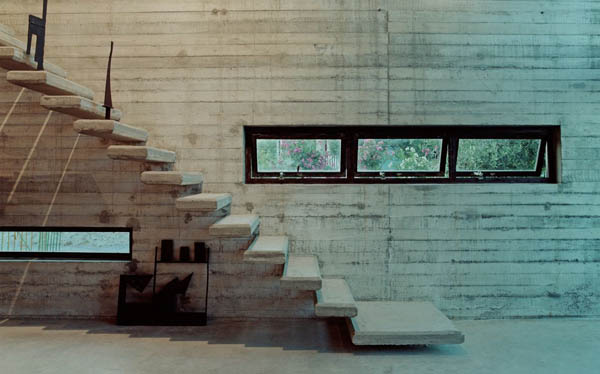There are many people who would argue that after WWII, especially in North America, architecture took a depressing turn. One in which design became simplified, where beauty and any resemblance of elegance was replaced with a blocky, rough appearance, often allowing exposed structural materials to take center stage in style.
Most were little more than brutally omnipotent and oppressively styled structures. Buildings that could easily be associated with and fit into George Orwell’s novel 1984, where images of big brother would be strewn across their sides.
The term Brutalism was coined from the French word “beton brut” which means raw concrete. The Brutalist style, which brought about the modernist architectural movement, gained popularity from the 1950s to the 1970s.

Brutal Style
Concrete is the calling card of the Brutalist Movement, though other materials have been known to be used; such as brick, glass, steel, and stone. Another common theme is the exposing of the buildings various functions. Where certain things may be normally hidden away, such as pipes and tanks, they are not only in full view, but generally take the focal point.
There is a certain ideology that is associated with Brutalism, and was commonly agreed upon by many architects who practiced its use. Architects attempted to display a feeling of social utopianism within their designs. Though they had collective intentions, critics argued that their design had the exact opposite affect. It was argued that rather than being integrating and protective, Brutalism created buildings that seemed oppressive, and compared to the surrounding architectural designs, out of place and alien. This all made the Brutal buildings seem unfriendly, and mostly unwanted by the public.
One problem that Brutalist architecture tried to solve was affordable housing. This, obviously is easily accomplished through the use of Brutalism. However, after the urban decay that set in after WWII both in the U.S and Britain, communities were reluctant to accept Brutalist designs. This was no doubt due to the collective ideology that spurred on its design and style.
Criticisms and Disapproval
As it can be well assumed, there are countless critics of both Brutalism and the ideology it promotes. There are those that feel the style is essentially nothing more than poured concrete, and is nearly impossible to modify once it is built. Many communities that live in Brutalist structures feel they are difficult to maintain, especially in wet and damp climates. They are also terribly depressing, dull and drab. Often being the targets of graffiti as they simply cry out for something to cover the blankness of the concrete.
There is special criticism over Brutalism being used in government-sponsored projects. When the government builds a structure that feel oppressive and unconquerable, that creates the wrong image about how the government is run, and how much power they truly have. This was especially true during the 50s and 60s. After WWII, people feared fascism as they saw the results of that from the Nazi Party. Then the Cold War came into full swing, and people feared Communism. Both of these ideologies are collective in nature, which did not help further the acceptance of Brutalism. It also brought great criticism upon architects who practiced this style, people claiming they were in the closet Nazis and Commies.
A Few Noted Successes
Now for all the bad things that can be said about the design and ideology of Brutalism, there are certainly a few exceptions to the rule. Where some very impressive, and even beautiful designs have been created using Brutalist style. The UCSD’s Geisel Library is perhaps the most well known example of Brutalist architecture. It is so famous that it has even been featured in numerous science fiction movies.
Habitat 67 is another interesting and well known Brutalist design. Located in Montreal, Quebec, Canada, it was designed to integrate the variety and diversity of scattered private homes with the economies and density of a modern apartment building. Essentially, it was modular, interlocking apartment units.
The Philips Exeter Academy Library is perhaps the most unsuspecting of all the Brutalist designs. Its exterior is nothing special, and really has nothing special to offer. However on the inside, there is a marvelous site where almost the entire building, every floor is open spaced. It is currently the largest secondary school library in the United States. It houses 145,000 volumes on ine levels and has a shelf capacity of 250,000 volumes.

